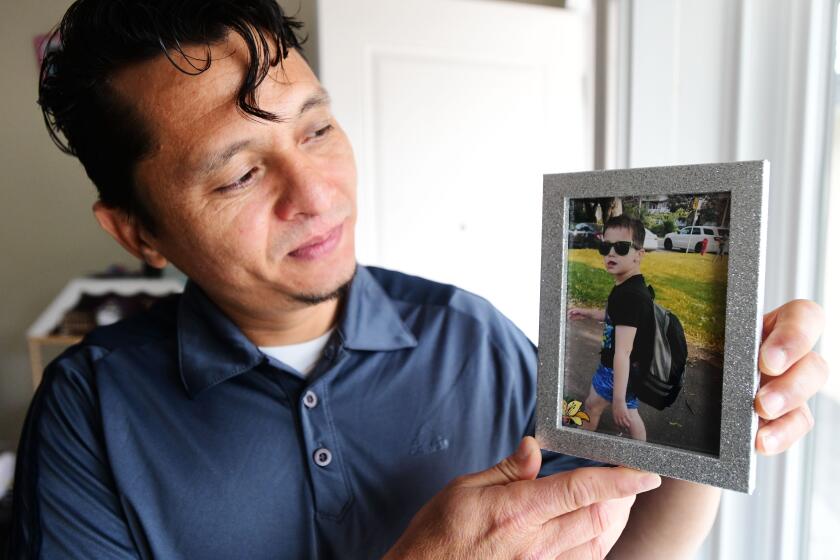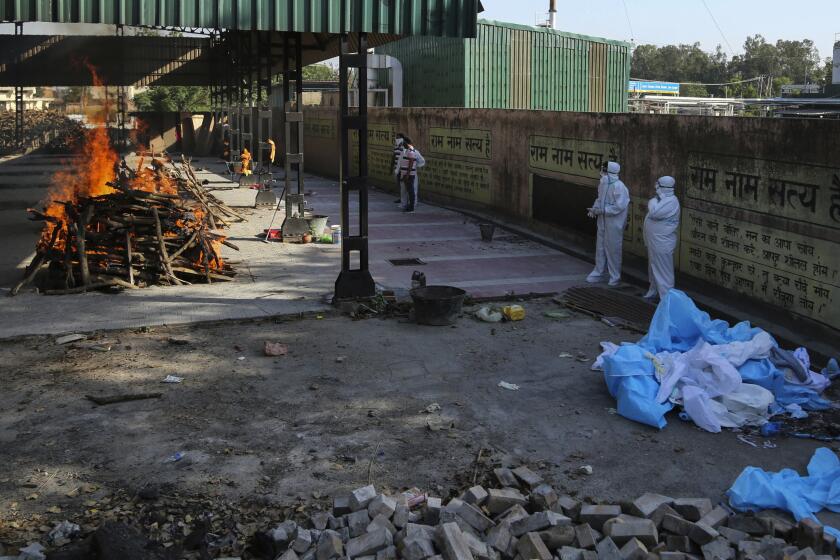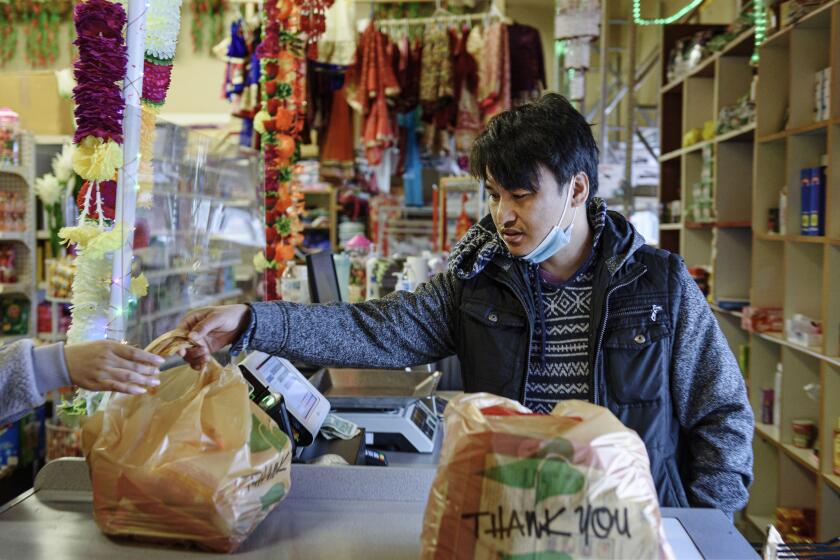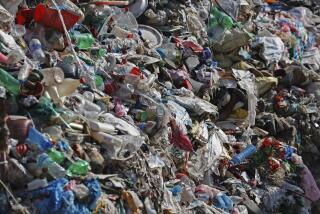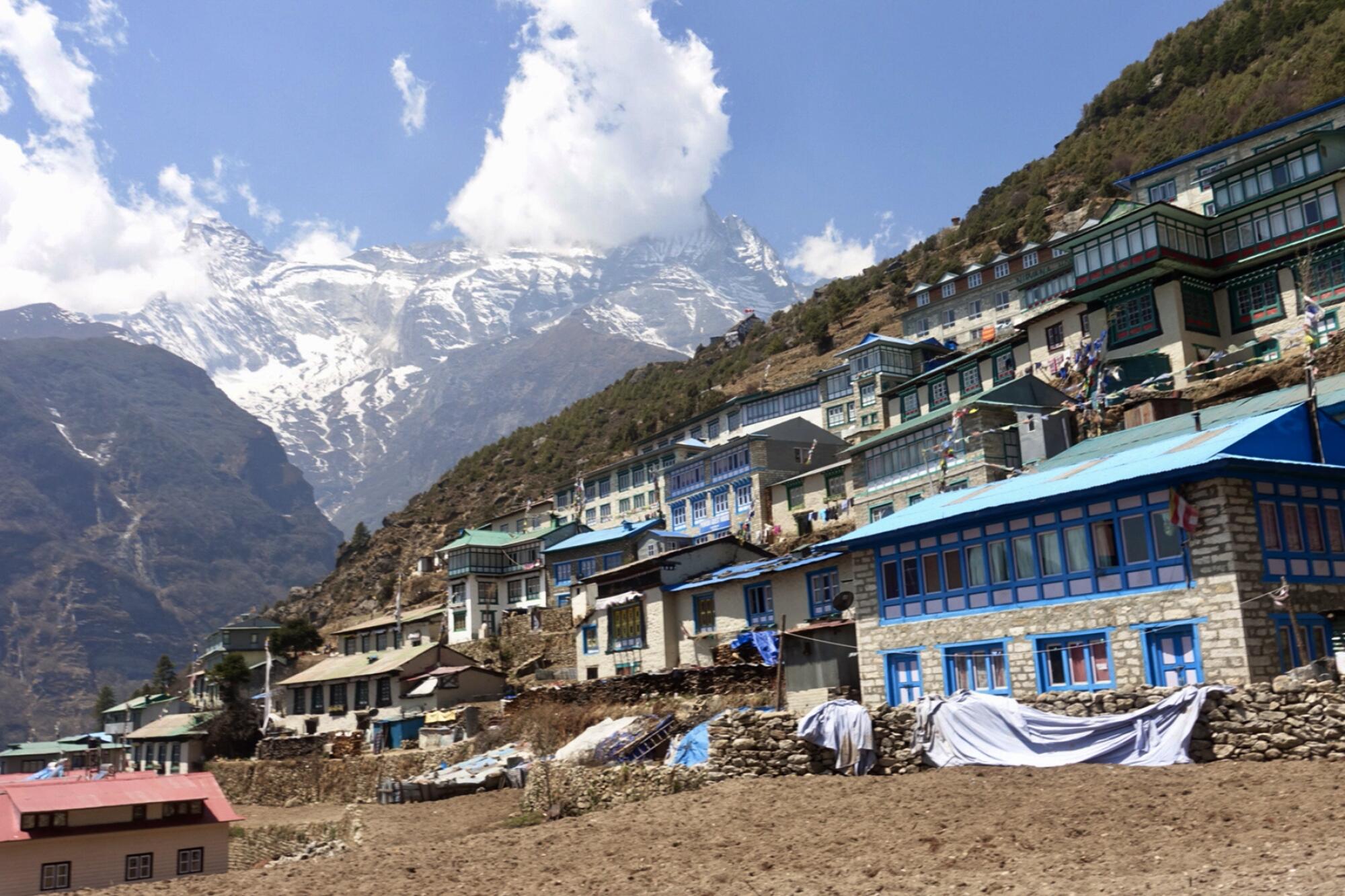
- Share via
NAMCHE BAZAAR, Nepal — On Sept. 1, 2019, four months before researchers in China identified a novel coronavirus, KC Krishna opened his first business in the heart of Namche Bazaar, the tourism hub of Nepal’s Mt. Everest region.
Krishna had moved to the boomtown for work 12 years prior. He spent more than a decade managing another lodge before opening his own, Thawa Lodge & Bakery Cafe, along with Sherpa Bar & Steak House on the floor below. Finally, he seemed poised to capitalize on the postmillennial rush of tourists to the highest mountain on Earth — a boom there seemed no reason to doubt would continue.
“If the business goes well,” Krishna remembers thinking, “my future, my kids’ future, my wife’s future — everything will be better.”
Less than two years later, Krishna — like so many other new business owners in the region — finds himself buried in debt mounting as high as the nearby peaks. With virtually zero income and no relief in sight, he does not know if his business can survive a third consecutive tourism season spoiled by COVID-19.
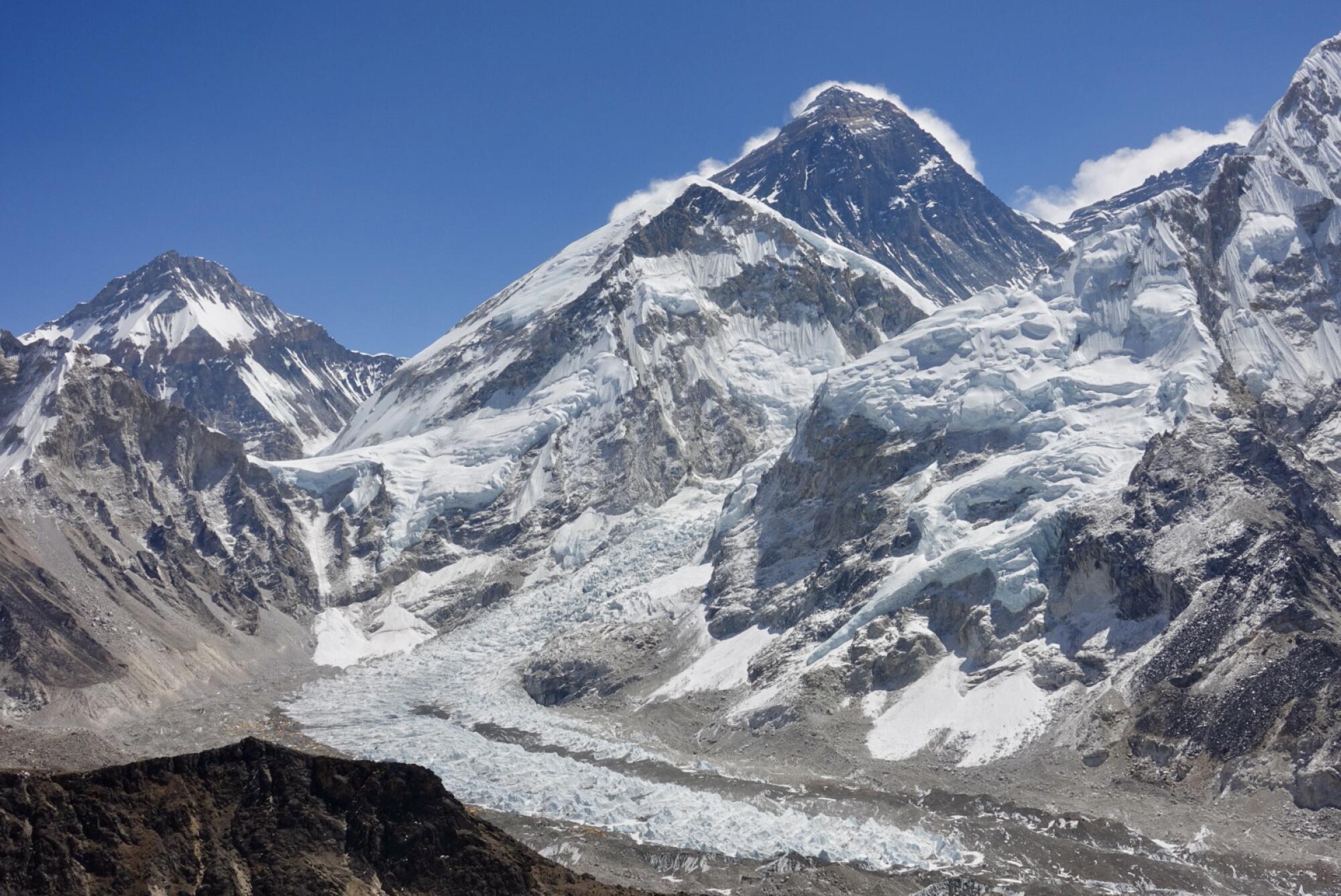
Recent media coverage of the Solukhumbu region has focused on the Nepalese government’s questionable decision to allow climbers to return to Mt. Everest, and the infusion of tourist dollars this will bring. But for most locals — many of whom took out high-interest loans to build businesses in the years leading up to the pandemic — this will be too little, too late.
Climbers typically account for less than 1% of visitors to the region. Trekkers make up the rest, and they have remained almost entirely absent this season. In 2019, 7,993 people entered Sagarmatha National Park by the end of March. This year, the number was 255.
As of last week, the trickle of trekkers has gone altogether dry. Along with neighboring India, Nepal is now experiencing a worrisome coronavirus surge. The Ministry of Health reported 9,196 new confirmed cases Friday, up from 298 a month before. Fatalities from COVID-19 are increasing, too. With 44% of tests now coming back positive, the government has imposed lockdown restrictions and suspended domestic and international flights.
While there have so far been no confirmed deaths from COVID-19 in Solukhumbu, the pandemic-induced tourism drought is hurting everyone in the region — which has undergone a radical transformation over the last three decades, from an agro-pastoral economy to one based on tourism.
Family separations don’t occur only at the Mexican border, as Carlos Rivera and his young son discovered when they crossed into the U.S. from Canada.
Mt. Everest is the main attraction, but the region is also home to snow leopards, red pandas and Himalayan tahrs. Visitors hike along glacier-fed rivers and up through rhododendron forests to a world of alpine meadows, Tibetan Buddhist monasteries and towering snow peaks. Three of the six tallest mountains on Earth are in Sagarmatha National Park.
The absence of trekkers is especially hard on new business owners who have loans to pay and lack ties to the Everest expeditions. Not only do paying Everest climbers number fewer than 400 per year, but expedition leaders — who charge clients $30,000 to $160,000 each — tend to return year after year to the more elegant and established businesses.
“They give business to only three lodges,” said Mingma Sherpa, chairperson of Namche Bazaar’s Lodge and Hotel Assn. “We have 53 lodges. The trekkers go to all lodges. We need the trekkers.”
Already, some business owners from out of town have cut their losses and returned to farming communities.
“They were unable to pay the rent, and they sold everything in shop, and they went back,” said Fura Chetten Sherpa, a local government official.
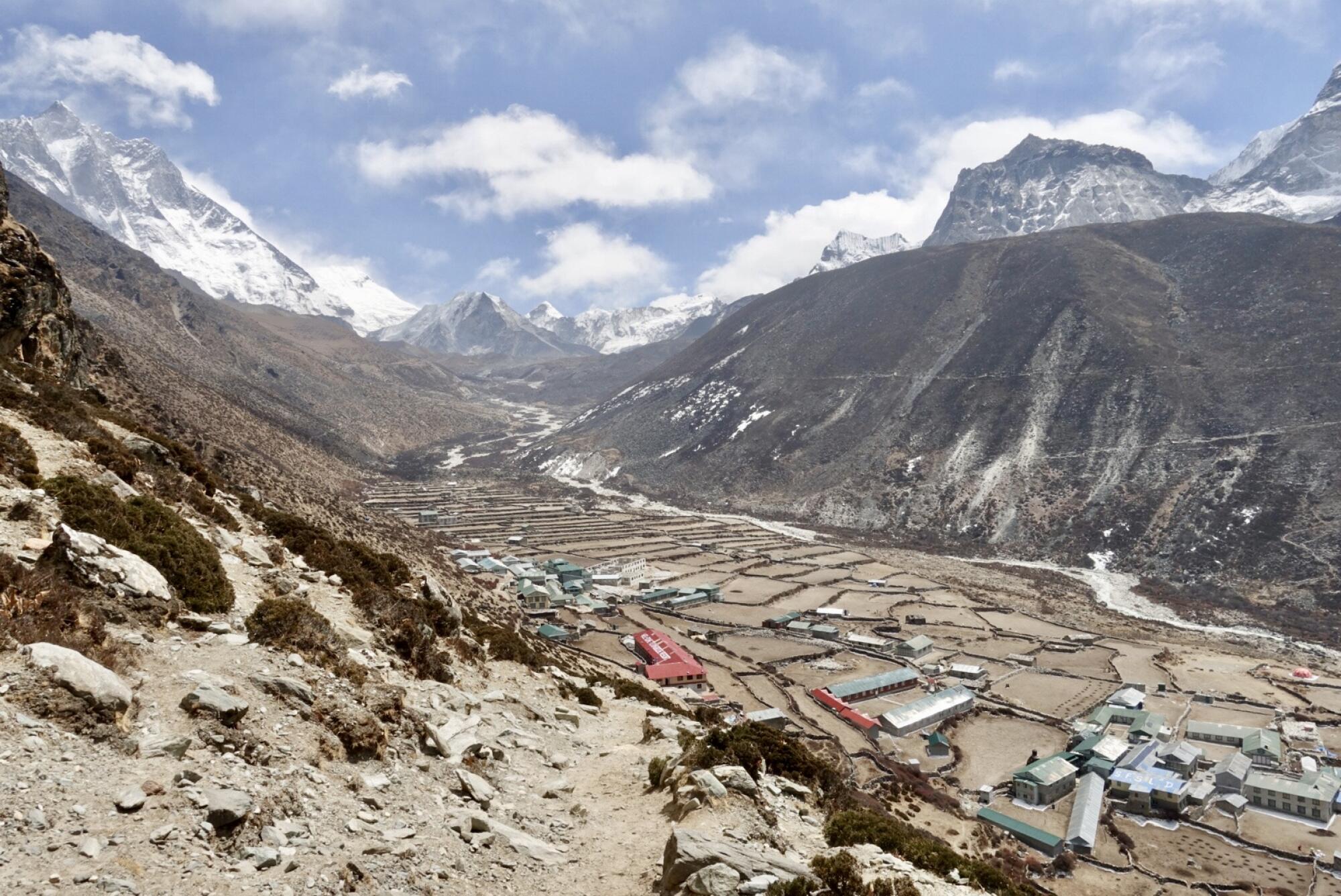
Other business owners are in too deep to stop now.
“We borrowed for everything,” recalled Krishna, who estimates that his business loans totaled $100,000, nearly a hundred times Nepal’s per capita income in 2019. “Spoon. Plate. Table. Chair. Coffee machine. Everything.”
While Krishna borrowed more than most, big loans are standard for new business owners in the region, who must cover the sky-high costs of transporting supplies, building materials and construction workers to remote areas.
Namche Bazaar is a five- to seven-day hike from the nearest road; goods are delivered via plane from Kathmandu to Lukla, then by helicopter or porter from Lukla to Namche. The shipping fee for a 2-liter bottle of Coke hovers around $2.60 — more than many Nepalis earn in a day. And Namche Bazaar is more accessible than most villages in upper Khumbu. Such costs make starting a business in the region a daunting commitment.
Nonetheless, investing in the Everest region’s tourism industry had seemed like a sure bet before the pandemic. The number of annual visitors to Sagarmatha National Park grew from about 5,000 in 1981, to 32,000 in 2010, to 58,000 in 2018. By the fall of 2019, Namche Bazaar — a town of fewer than 2,000 residents — was home to 53 lodges with a total capacity of 2,300 beds. And still, this was not always enough.
Infections and deaths continue to climb at alarming rates as India’s second COVID-19 wave threatens to topple its healthcare system.
“Some of the trekkers had to crash in the bakeries,” said one lodge owner, recalling a particularly busy day in 2019 when tourists were pushed on to the next village.
“‘Add some more rooms,’” Krishna remembers a friend advising him just before the pandemic struck.
On top of the already explosive growth in tourism, the Nepalese government had launched Visit Nepal 2020, a campaign to attract 2 million tourists to kick off the new decade. In preparation, lodges renovated, grocers stocked up on perishable goods, and herders bought extra food for their pack animals.
“Everybody prepared for Visit Nepal 2020,” recalled Lhakpa Geljen Sherpa, founding owner of Mountain Sherpa Gear, a local trekking and mountaineering equipment brand started in 2009. The company increased its inventory for 2020 and is now struggling to pay loans and rent amid a 90% reduction in sales.
“Here, we always invest, invest, invest,” said Lhakpa Geljen, reflecting on the period of aggressive speculation that preceded the pandemic. “If people here build one successful lodge, then they do next, next, next. Always investing.”
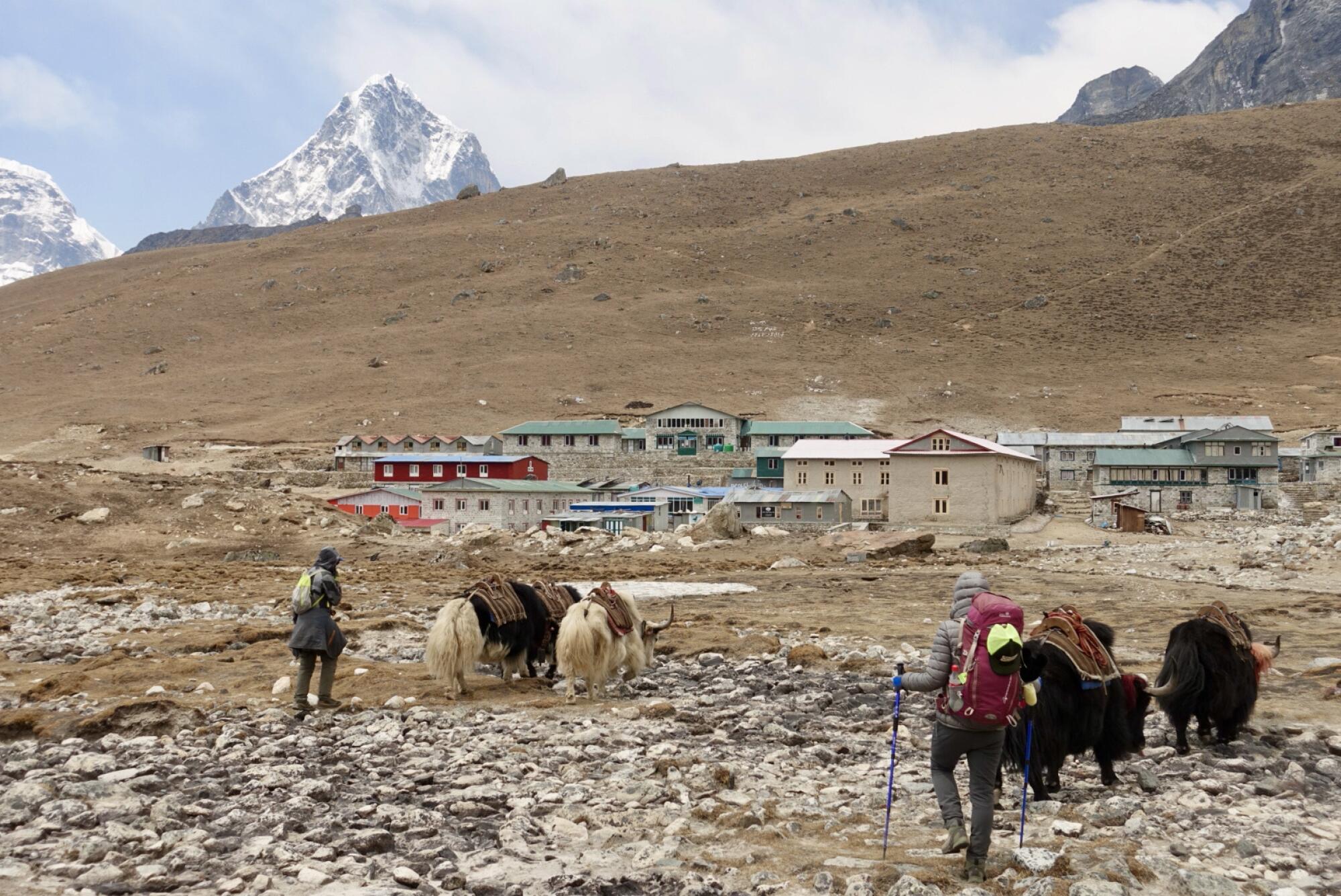
The tourism drought has depressed demand for local goods, affecting growers, herders and everyone else in the money economy — which has by now absorbed all of Khumbu. Last fall, the potato harvest was roughly 40% lower than usual, and still potatoes sold at steep discounts. Prices for other crops have been slashed almost in half.
Just a few decades ago, locals survived by growing potatoes, herding yaks and trading goods with Tibet — yet today many rely not only on tourism, but also on checks from family members abroad. Remittance payments have dropped precipitously during the pandemic because of border closures, eliminating the most likely form of relief.
Locals now face painful choices in their bids to stay afloat. Krishna, who would normally employ six workers, is now struggling to pay a half salary to one. His bakery lacks a baker; if a stray trekker comes for apple pie, Krishna walks down the street and buys from another cafe.
“Right now, everything is going to credit,” said Krishna, who is relying on the good faith of local grocers for food supplies.
A blast ripped through an area near a high school in the Afghan capital Saturday, government officials said, killing 50 people.
“It’s a tight situation for each and every one here right now,” said Menuka Basnet, who along with her father runs the grocery across the street. “We are selling for so little. If we sell for low prices, they’ll ask for lower prices. We have to see if we can give or not. Sometimes we can, and sometimes we can’t.”
Basnet and her father closed their store for 12 months after the pandemic struck — and by the time they reopened, most of their inventory was past or approaching its sell-by date. A can of Pringles, which would normally sell for $2.55 to $3.43, instead went for 86 cents — less than they had paid for it.
“We had some savings, but we used them up,” said Basnet. “There is no money for rent. Now we are selling goods at a low price so we can buy new goods. That’s the only way out.”
Everest locals are no strangers to hardship and crisis. The Gorkha earthquake of 2015, which killed almost 9,000 Nepalis and left hundreds of thousands homeless, struck this region especially hard. But according to the government official Fura Chetten, the economic fallout from the pandemic will exceed that of the earthquake — which damaged or destroyed most homes in his district.
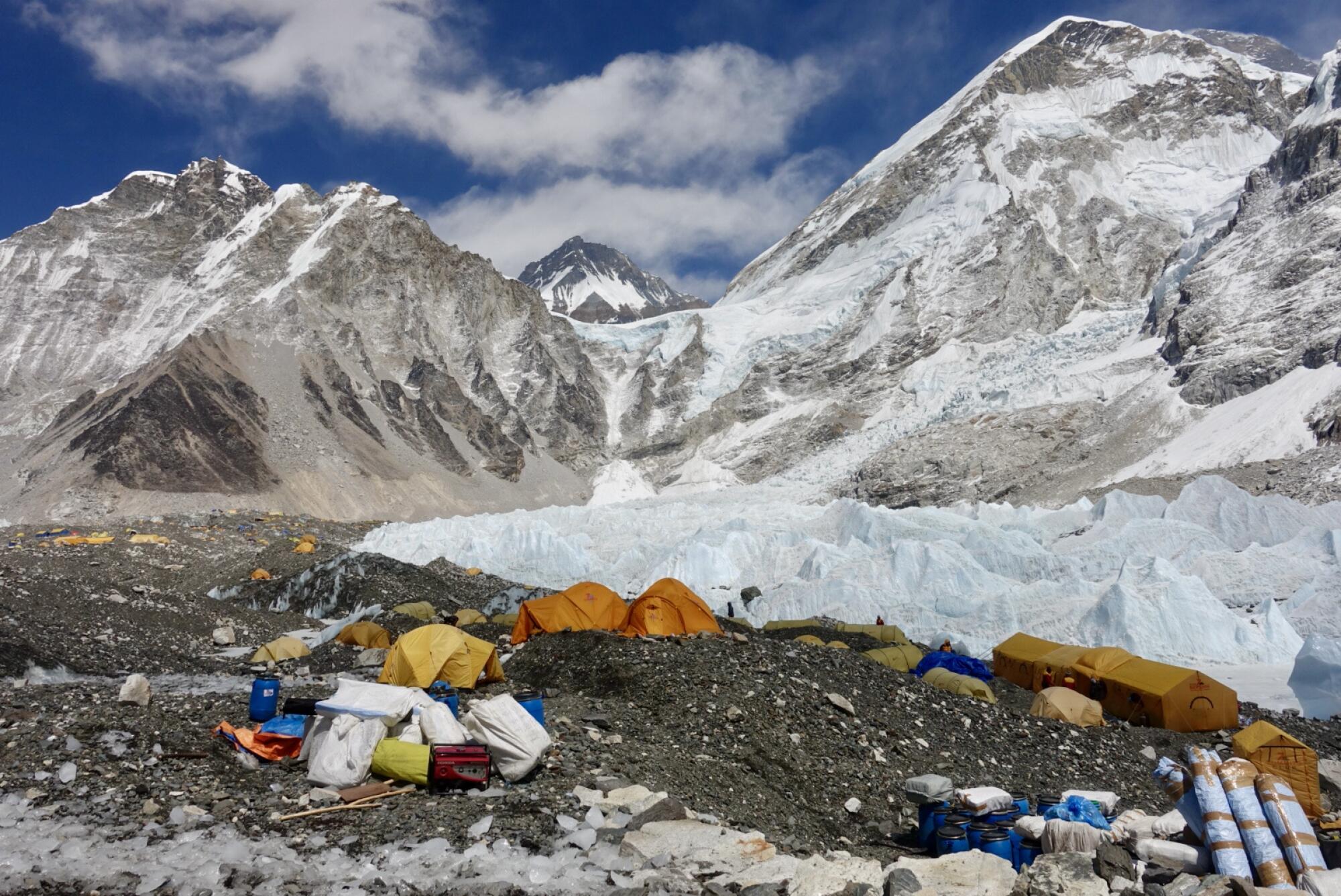
“After the earthquake, the tourism continued,” he explained. “But in COVID, everywhere is locked down. Even if you want to come, you are not allowed to come.”
Others, meanwhile, have been forced to stay in the region against their wishes. Kaji Bista manages 8,000 Inn, a lodge a few miles from Everest base camp, but his family and home are in Kathmandu. In normal years, he would spend no more than half his time at the lodge — but since he can no longer afford his usual staff, he now spends five out of every six months maintaining the lodge himself. Bista fears the negative health effects of spending nearly the whole year above 16,500 feet, where oxygen levels are roughly half that at sea level.
“If we stay long time, anytime can be the problem,” says Bista, who is 50 and suffers from high uric acid. “I’m afraid about this. When I go to Kathmandu, I want to check up my body. But it takes a lot of money.”
North Dakota has outpaced every other in growing its Asian American communities, even as California keeps its lead as the state with the largest Asian American population.
Spending so much time away from family also takes an emotional toll on Bista.
“I have four kids,” he said. “Now they are big. But I cannot take them in my hands, because I am always here. I have a wife also. We are unable to stay together. We are unable to share each other. Sometimes when I see other people with small kids, I think, ‘Why am I unable to stay with my family?’”
So far Bista is managing, “hardly,” to pay for his kids’ education, but he has no money left over for himself. “I am unable to buy a bed,” said Bista. When he returns to his family home, he sleeps on the floor.
Over the last two weeks, Nepal’s alarming spike in COVID-19 cases has dashed hopes that tourism might pick up in the second half of the season. Locals do not expect help from the government, which so far has provided virtually no relief. Nothing is likely to change until trekkers return — and as for when that might happen, locals have only guesses and prayers.
“I pray to God all the time,” said Krishna. “I tell God, ‘Please. Lose the coronavirus.’ And one day, lots of people coming. I hope that.”
Weissenbach is a special correspondent.
More to Read
Sign up for Essential California
The most important California stories and recommendations in your inbox every morning.
You may occasionally receive promotional content from the Los Angeles Times.
